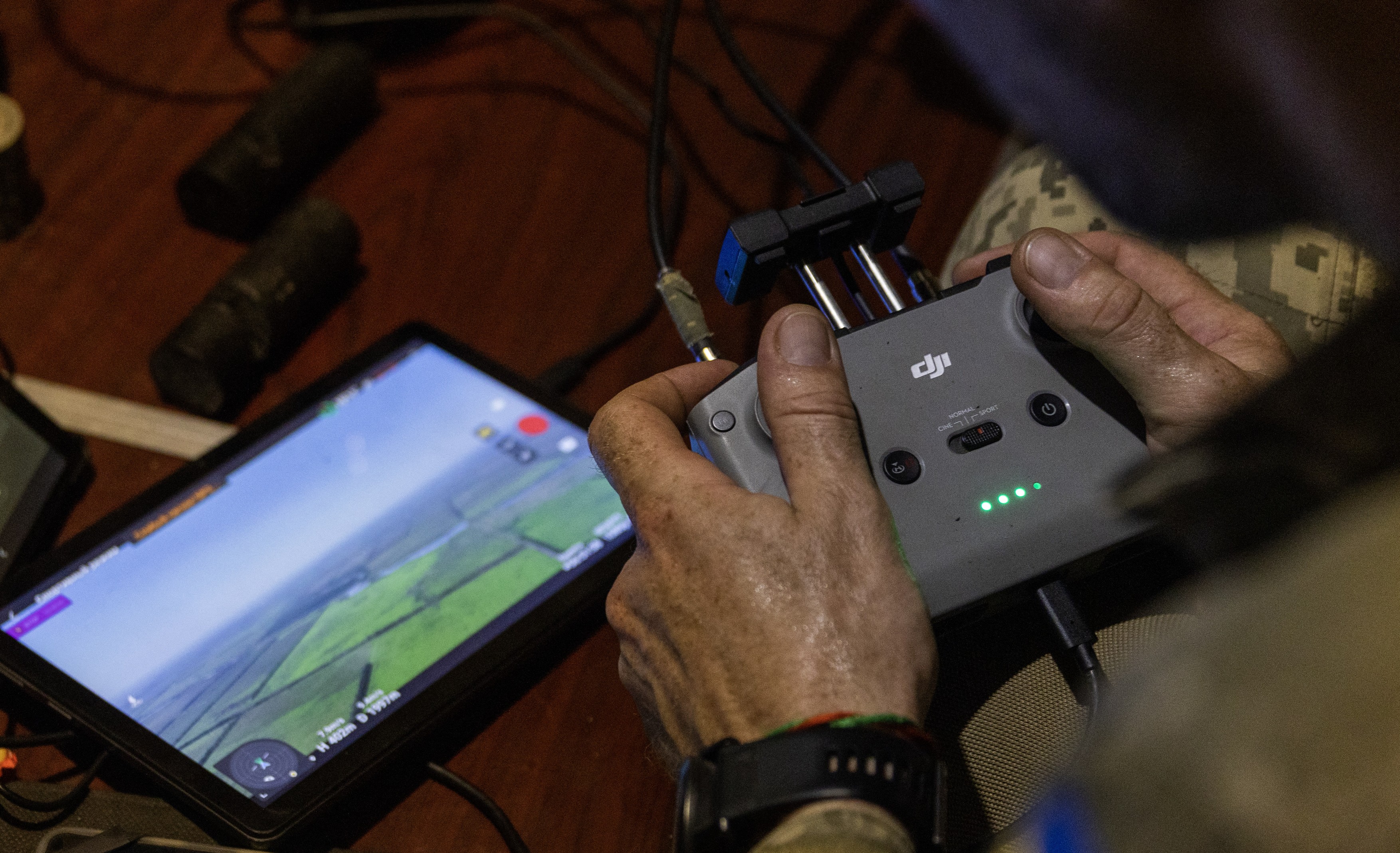
Images from Ukraine show the war at two speeds: in the trenches along the front line, in parallel with drone strikes, modern anti-aircraft systems, satellite networks that transmit data in real time. Ukraine is a “laboratory where the future form of war is being created,” the “artificial intelligence war of the future,” says an article in the National Defense magazine.
The military publication explains: “Although this cannot yet change the nature of war, we believe that Ukraine is a laboratory where the next form of war is being created. This is not a side lab, but a central, relentless, and unprecedented effort to fine-tune, adapt, and improve AI-enabled or advanced systems for immediate deployment. These efforts pave the way for AI warfare in the future.”
Advantages brought by technology
The fact that Ukraine was able to resist the Russian onslaught for one and a half years is due not only to its fighting spirit and constant supplies of conventional weapons, but also to the use of modern technologies on the battlefield.
“I would describe this war as a very conventional war, partly with almost archaic elements such as artillery duels, but which is covered and imbued with an additional level of high technology,” Frank Sauer of the Army University (Bundeswehr) in Munich told Tagesschau.de .
Artificial vision, speech recognition, analysis of geodata using neural networks: all the mentioned services are based on technologies that can be attributed to the field of “artificial intelligence”. Unmanned weapon systems, such as flying or hovering drones, are relatively simple weapons, but they are also used extensively by both sides of the war.
The “chain of destruction,” that is, the attack sequence from detection to destruction of a target, is greatly reduced by the use of targeting software, as is the time and manpower required to analyze the data.
Technology also plays an important role in protecting one’s own armed forces: a drone with a quadcopter camera costs a few hundred euros and – if not shot down – can be remotely controlled to do what a scout should do.

A Ukrainian military man controls a drone (Photo: Daniel Carde / AFP / Profimedia)
The Russian forward is not far behind at this level. Military expert Frank Sauer sees “a significant difference between what Russia has presented in the media in recent years and what these systems actually do. So far, none of these supposedly high-tech miracle weapons have been seen in Ukraine. My impression is that not much has happened there beyond the prototype stage.”
However, Russia also takes advantage of relative economy by using technology: for example, mass deployment of cheap Shahed kamikaze drones, which must then be shot down by Ukrainian forces with expensive anti-aircraft salvos.
Disadvantages due to dependence on technology companies
However, modern technologies do not always solve the military problem, according to the German military expert. “You can fly over a minefield using a drone with an infrared sensor – you do it in the evening, when the sun shines all day and the mines have warmed up more than the surrounding soil. Then you can see the infrared image of each mine, identify it and map it, says Frank Sauer. — This is great, but they are still far from being eliminated. You need demining systems.”
Another disadvantage is the relative dependence on high technologies: Sauer cites the example of Starlink, which “turned the game” for Ukraine. Elon Musk has flirted several times — seemingly casually — with limiting or shutting down the service, but has stuck with it so far.
A few days after the start of the Russian invasion, billionaire Elon Musk helped maintain Ukraine’s communications network with Starlink. The Clearview AI company offered its facial recognition services to the country, which are currently being used by the armed forces to identify dead and captured Russian soldiers. Using Primer artificial intelligence software, they were able to intercept and analyze the unencrypted phone calls of Russian militants.
In April 2022, satellite images of the Maksar company caused a stir, as they allegedly showed mass burials on the outskirts of Mariupol – and thus allowed conclusions to be drawn about the conditions in the besieged city at the time.
In early 2023, Palantir CEO Alex Karp stated that Meta-Constellation software was responsible for most of the detection and selection of targets in Ukraine. Since then, his company has been aggressively promoting the “Skykit,” a kind of portable computer that includes a quadcopter and satellite dish that can be used for days without connecting to a power grid.
Unfortunately, many AI companies are completely opaque in their so-called “support” of Ukraine. It is not publicly known if the government has to pay for it or if the software gets it for free because it provides data and expertise for the conflicting algorithm. “These are companies and their goal is to sell their products,” says German military expert Frank Sauer. “And a product that can be marketed as tried and tested will sell better at the next gun show.”
The power of innovation is in place
Now Ukraine emphasizes that it is developing weapons based on the technology itself. It combines high-tech and low-tech, restoring civilian components and military equipment. For example, the SBU special service recently introduced the SeaBaby floating drone with hundreds of kilograms of explosives, which it claims was decisive in the attacks on the Kerch Bridge to Crimea and on the Russian amphibious assault ship Olenohirsky Gornyak. .
Sauer notes that the main feature here is not extraordinary progress, but how inventively Ukrainian forces used available materials and technologies. “The vision of armed forces like NATO can be: we don’t need it. That’s why we have torpedoes or anti-ship missiles. But the ability to innovate and incredibly short development cycles is a really interesting thing that we can learn from.”

New Ukrainian kamikaze maritime drone (Photo: Not provided / WillWest News / Profimedia)
Ukraine’s chances in this respect are not bad. Security expert Ulrike Franke of the European Council on Foreign Relations (ECFR) writes that Ukraine is likely to become a “serious player in the drone sector” after the end of the war.
The Ukrainians themselves show even more optimism: we will sell software to Palantir until the end of the war,” the Washington Post wrote at the end of last year, referring to an officer with the pseudonym “Lesya”.
____
- Follow the latest events of the war in Ukraine LIVETEXT on HotNews.ro
Source: Hot News
Ashley Bailey is a talented author and journalist known for her writing on trending topics. Currently working at 247 news reel, she brings readers fresh perspectives on current issues. With her well-researched and thought-provoking articles, she captures the zeitgeist and stays ahead of the latest trends. Ashley’s writing is a must-read for anyone interested in staying up-to-date with the latest developments.